The most valuable Camaros from every generation
Interested in the Camaro’s longtime rival? Check out the most valuable Ford Mustangs, here.
Rumors of the Camaro’s approaching demise have been circulating for a while now, and with General Motors’ announcement of its electrification plan, that rumor looks more realistic every day. If all indications are correct, 2023 could be the last year for the Camaro. A sad end to a pillar of Chevrolet performance.
Introduced in 1967, “Camaro”—per GM’s marketing department— stood for a “a small, vicious animal that ate Mustangs.” Fifty four years and six generations later, the Camaro and Mustang are still trading blows for dominance of the performance market. Much like it’s brother, the Firebird, which we covered previously, values can range from affordable to the seven-figure territory. Let’s take a look at the most expensive Camaros from the first through fifth generation.
First Generation (1967–1969): 1969 Camaro ZL1 427cid/425hp
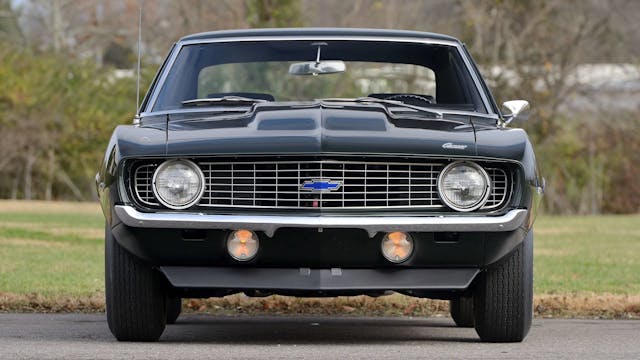
#2 (Excellent) condition average value: $705,000
Easily the most recognizable of any year of Camaro, the face lift the car received in 1969 was just part of what made that year so iconic. This was also a watershed year for performance in the Camaro. Widespread use of the COPO program meant that the powerful 427 big block would be ordered if your dealer had the right connections within GM and your pockets were deep enough.
Through the COPO program, famed tuner Fred Gibb convinced GM brass to offer the race bred, all aluminum ZL1 427 in the Camaro. With a price tag that usually ran over $7,000 (the engine option alone cost over $4,000), these were very expensive cars. In fact, Gibb ordered 50 units to sell and had to send 37 back to GM due to low sales. In total, only 69 ZL1s were produced and are extremely coveted today.
Values run in the high six-figure territory, with a couple sales breaking the $1 million mark. This puts the ZL1 Camaro at the top of the list for most expensive Camaros and among the most expensive muscle cars on the market. Compared to its sibling the Firebird, only the Trans Am Convertible is comparable in value, although it is a far rarer car, showing just how much clout the ’69 Camaro carries in the muscle car world.
Second Generation (1970–1981): 1970 Camaro SS 396cid/375hp
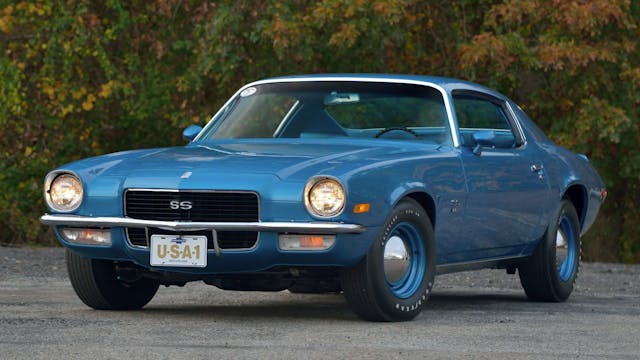
#2 (Excellent) condition average value: $86,500
Second-generation Camaros are most remembered in their later iterations. The Camaro didn’t have it’s Smokey and the Bandit moment, but it did have Fast Times at Ridgemont High. There wasn’t a “Screaming Chicken” on the hood but the later Z/28s had some pretty wild graphics. But just as with the second-gen Firebird, serious collectors lean toward the early cars.
The logic is pretty simple: It all comes down to horsepower. While you couldn’t get a 427 or a 454 in your 1970 Camaro, you could get a 396 making 375 hp. Only 600 cars ordered with this option, and the L78-code engine disappeared from the Camaro order books the following year. The Camaro’s horsepower would begin to slip and 1972 would be the final year for a big block Camaro. Pontiac managed to hang onto horsepower and cubic inches through 1979 in the second generation F-Bodies making them, on average, more valuable than their Camaro brethren.
Third Generation (1982–1992): 1990 Camaro IROC-Z 350cid/245hp
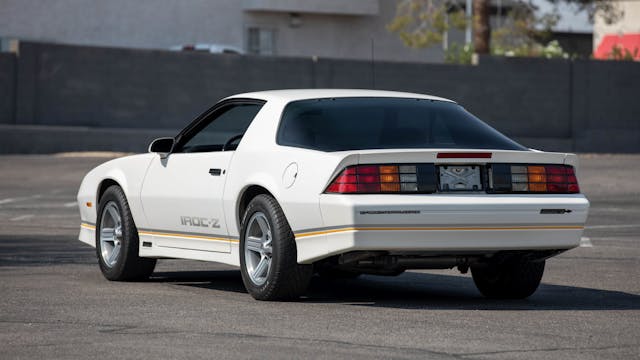
#2 (Excellent) condition average value: $28,000
The third-gen Camaro, which debuted in 1982, was a revelation in terms of its design and also earned praise for its steering and handling. What was missing, though, was some real grunt. Over the 10-years of production, horsepower would finally come back to the platform, especially with the addition of Tuned Port Injection in 1985. The same year would see the addition of the iconic IROC-Z (named after the International Race of Champions).
To third-gen Camaro fans, it should come as little surprise that the 1990 IROC-Z would be the most valuable. It was the final year the IROC-Z name would grace the side of a Camaro, and the 245-hp 350 engine would be the most powerful engine fitted to the third-gen Camaro. If you opted for the G92 performance axle and chose to live without air conditioning, your hot 350 equipped IROC-Z would automatically come with the 1LE special performance package. 1LE cars received a lot of goodies to prep the car for SCCA racing such as a heavy duty suspension, 4-wheel disc brakes and an aluminum drive shaft. Camaros equipped with the 1LE package are quite rare and sought after, and can boost values substantially.
A 350 powered IROC-Z with the 1LE package could expect to see a noticeable boost in value above base pricing in the Hagerty Price Guide, but otherwise, Camaros from this era have remained on the affordable side. Credit high-production and blame the sometimes less-than-savory reputations of second-hand owners. Also, the 350 wasn’t offered with a stick. Still, on average, Camaros from this era carry higher values when compared to the Firebird, with the exception of the 1989 Turbo Trans Ams and the SLP tuned Firehawk. It goes to show that the Camaro came back into its own and regained its performance reputation through the ’80s and early ’90s.
Fourth Generation (1993–2002): 1997 Camaro SS 30th Anniversary LT4 350cid/330hp
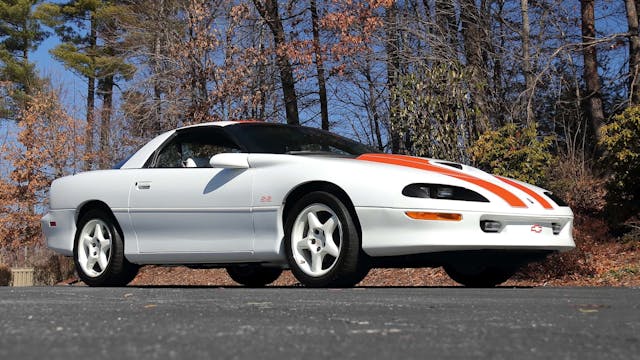
#2 (Excellent) condition average value: $50,100
The fourth-generation Camaro can be best summed up with the word “evolution”—it changed more throughout its run than during any other era. This is most evident in the engine room. The motor it debuted with, the 5.7-liter LT1, represented serious performance in 1993, but is these days often maligned for its finicky Opti spark ignition. This likely has quite a bit to do with the fact that later fourth-gens got the completely redesigned, LS1 small-block V-8. This engine brought the performance to a whole new level and allowed sub $25k Z-28s to run with some of the hottest sports cars of the day.
With the LS1 being such a solid performer, it is a bit curious that the most expensive fourth gen Camaro is not a LS1 based car. To be fair, it isn’t an LT1 car either. For 1996, the legendary Camaro SS badge returned with the help of Street Legal Performance (SLP), the same people responsible for the Pontiac Firehawk. Like with the Firehawk, a Camaro SS could be ordered directly through your Chevrolet dealer, technically making this a regular production Camaro. In 1997, like with the Firehawk, SLP offered a small number of cars with the LT4 engines plucked from the Corvette program.
These cars came only as 30th Anniversary edition Super Sports and were limited to 100 cars. These cars come up for sale infrequently and often fly under the radar, but they can bring strong prices, making them the most valuable Camaro you could’ve ordered from your Chevy dealer (GMMG built a run of tuned-up ZL1 Super Car Camaros, which can bring up to six figures). Compared to Firebird prices, the Camaro and Firebird run neck-and-neck in value, with a slight edge to the Firebird, but it’s hard to argue with pop up headlights and nostril hood scoops.
Fifth Generation (2010–2015): 2012-2015 Camaro COPO

#2 (Excellent) condition average value: $80,800
Following an eight year hiatus, Chevrolet brought the Camaro nameplate back, this time based off of the Holden Zeta chassis. Following the Mustang’s lead, the styling has many retro inspired cues from the ’69 Camaro. Many of the old, familiar option packages came back as well: the SS package got you the base V-8, a Z/28 came along as a track focused street car, and the ZL1 offered a supercharged V-8 as the high-horsepower option.
Most anticipated though was the COPO.
This track-only package was first offered in 2012 and was made as exclusive and hard to get as the original COPOs. Only 69 units would be produced per year and prospective buyers had to enter a lottery to get the opportunity to purchase one. At that point, you could choose your engine and power level, or opt to buy the other engines as spares to swap at will. Many of these cars were bought as collector items and due to the nature of these being race cars, none of them are legal for street use and therefore have little to no usage at all. A handful have been raced successfully in NHRA Super Stock class as well.
Since the majority of these cars have no use, it can be challenging to determine the a hierarchy of collectability (as can be the case with many “instant collectibles”). Cars ordered with every engine option can be worth substantially more than a COPO ordered with just one engine. As with any race car, examples with exceptional racing history can help value more than condition and miles. Due to the COPO’s success, Chevrolet is still producing the package in the sixth-gen platform and has even made an all-electric E-COPO to prove the capabilities of electric cars in racing. For the time being it looks as if the COPO package will stick around as long as the Camaro will, which, *sniff* might not be all that much longer.
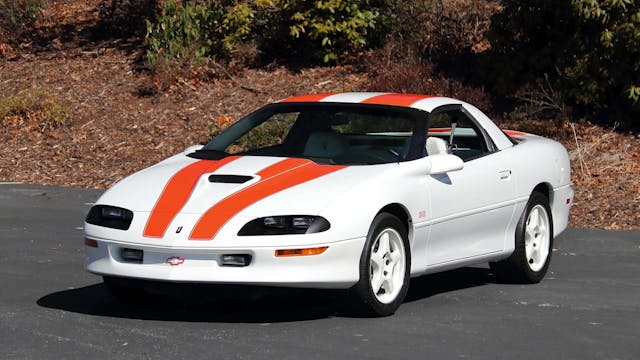


While not sharing the rare air or value of the COPO cars, my 2015 SS/RS Vert Commemorative Edition is arguably the rarest of the 2015 bunch. It’s only 1 of 4, 6 speed manuals that have been documented to date and of those four, it’s the only one with the factory badged, short throw shifter option. It is bone stock to this day (March 2023) and has 57K miles.